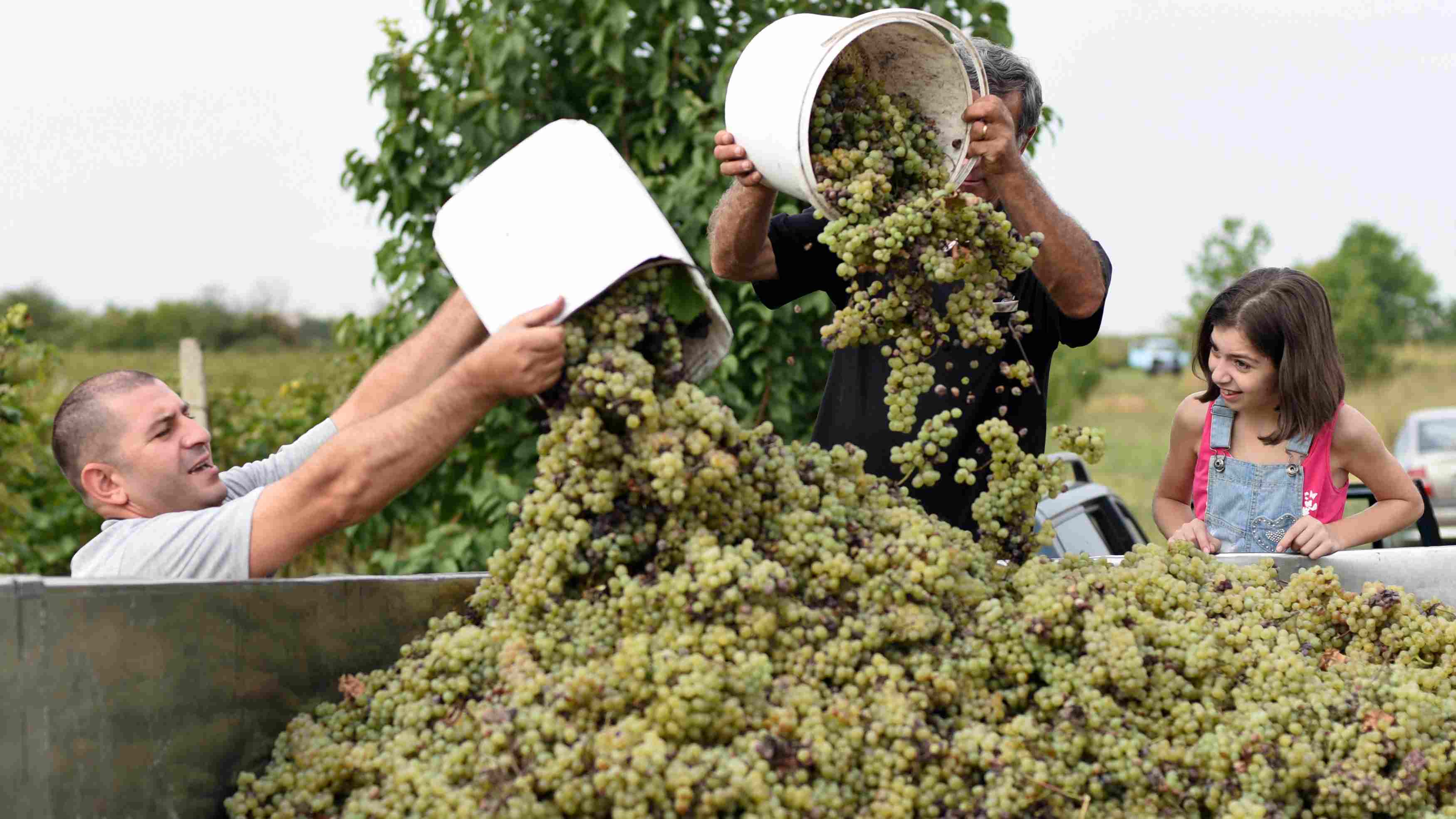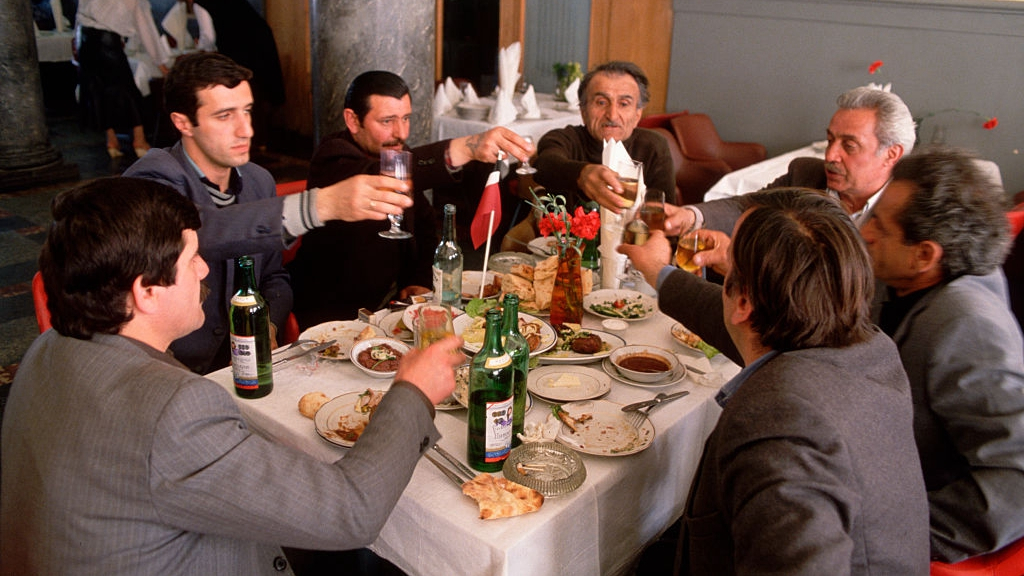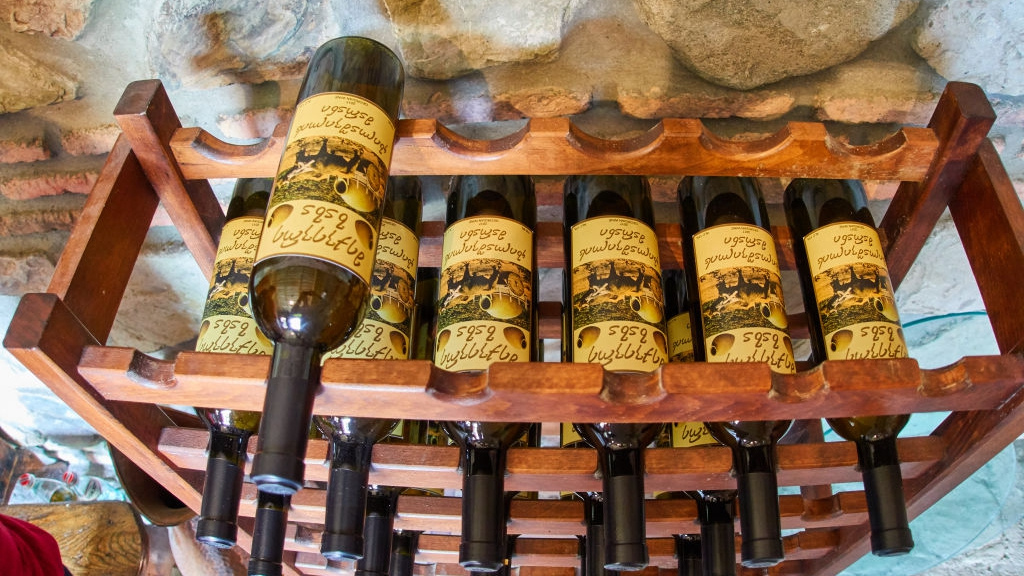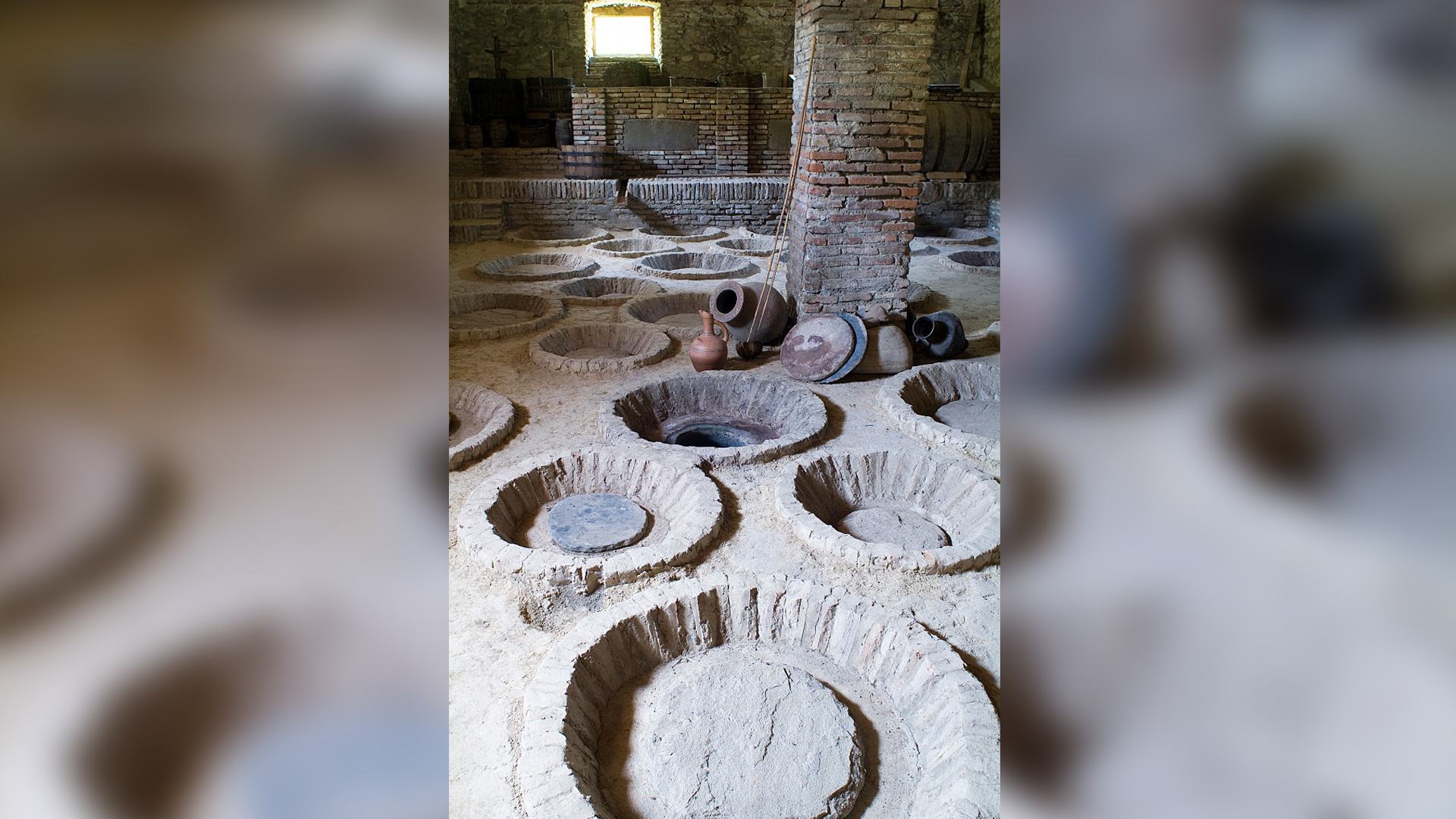
World
15:07, 04-May-2019
A taste of wine heaven of Georgia
Updated
15:55, 04-May-2019
Bu Shi

Georgia, a country that lies at the crossroads where eastern Europe meets western Asia, has hit the headlines for many wrong reasons, like war and conquest, whereas it has more to offer the world – as simple as through a sip of wine.
When talking about wine, countries like France, Spain and Italy would instantly pop up in people's minds, but for Georgia, it is also one of the country's draws as it boasts a history of viniculture for over 8,000 years.
It is widely believed that the word "wine" originated from the Georgian word of "ghvino" and Georgia was called “the birthplace of wine” for a good reason.
Thanks to its geographical diversity and mild climate, there are more than 500 categories of grapes grown throughout the country, thriving in the humid air and thaw winds coming from the Black Sea.

Members of the Makharashvili family collect grapes at the familiy's vineyard in the village of Kachreti, some 80km of Tbilisi, on September 26, 2015./ VCG Photo
Members of the Makharashvili family collect grapes at the familiy's vineyard in the village of Kachreti, some 80km of Tbilisi, on September 26, 2015./ VCG Photo

Statue of the mother of Georgia, Kartlis Deda on May 31, 2012 in Tbilisi, Georgia. / VCG Photo
Statue of the mother of Georgia, Kartlis Deda on May 31, 2012 in Tbilisi, Georgia. / VCG Photo

Men toasting in restaurant./ VCG Photo
Men toasting in restaurant./ VCG Photo

Rack with typical Amber Colored white wines fermented in the traditional Qvevri Clay jar on August 4, 2018, in Telavi, Georgia./ VCG Photo
Rack with typical Amber Colored white wines fermented in the traditional Qvevri Clay jar on August 4, 2018, in Telavi, Georgia./ VCG Photo

Old qvevri at a 16th century winery Velistsikhe museum./ VCG Photo
Old qvevri at a 16th century winery Velistsikhe museum./ VCG Photo
And the traditional way of producing wine that dates back centuries - putting grapes in clay jars known as qvevri and burying it underground for a couple of months so it could well fermented - is still largely in use in the face of modern-style production.
But Georgia's love for wine, like winemaking and drinking, goes beyond those activities to infuse with its history, cultural, religious and social life unlike anywhere else and has become part of its national identity.
In Georgia's capital of Tbilisi, the iconic 20-meter aluminum statue of Kartlis Deda, known as "Mother of Georgia," is standing upright with her hands full - one with a sword to fight for liberty, and one with a cup of wine to greet friends.
Almost everywhere you go in Georgia, you'll be invited to have a glass of wine. It is a perfect embodiment of a Georgian's hospitality. As one of its old sayings goes, "every guest is a gift from God."
What are the cultural elements that best represent Asia? Follow up the "Know Asia Better" series. It will offer you a glimpse of 47 Asian countries, through architecture, art or cultural figures to show you a diversified Asia that you may never have noticed before. Themed in the exchanges and mutual learning among Asian civilizations and building a community with a share future for mankind, the Conference on Dialogue of Asian Civilizations will be held in Beijing in May.

SITEMAP
Copyright © 2018 CGTN. Beijing ICP prepared NO.16065310-3
Copyright © 2018 CGTN. Beijing ICP prepared NO.16065310-3